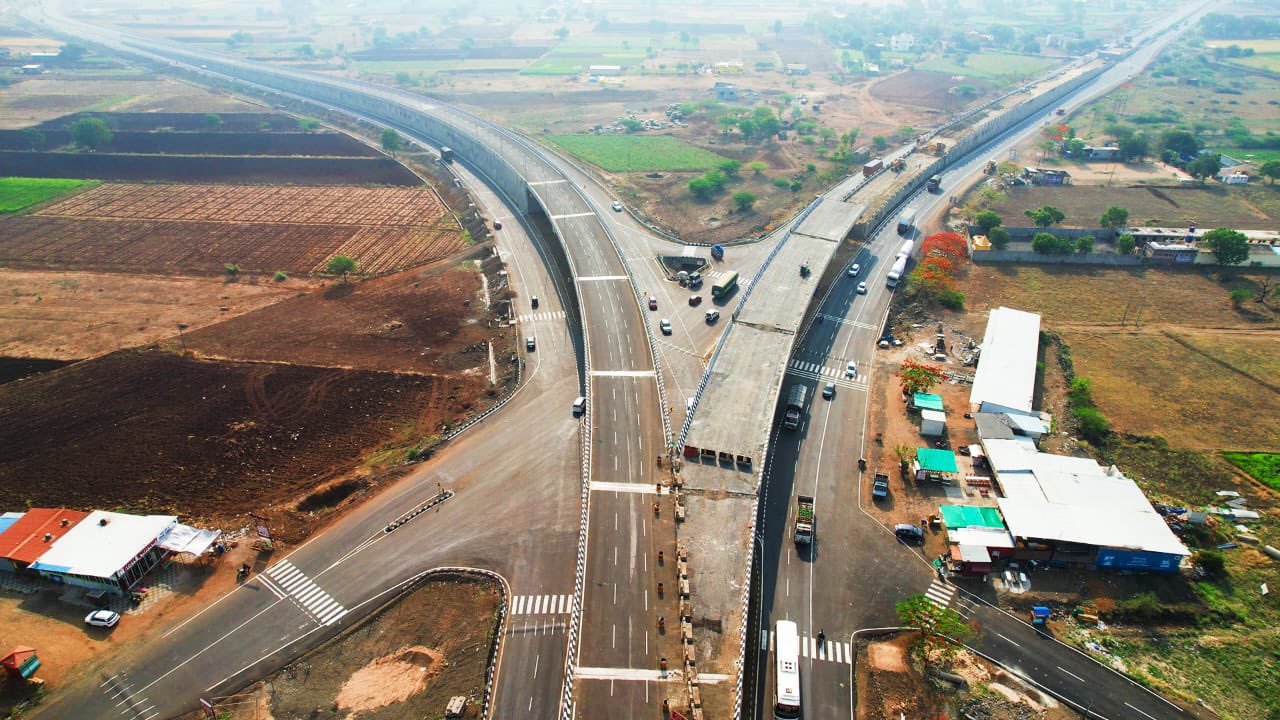
Explained: Why Sinnar-Shirdi 4-lane highway project is a boon for pilgrims

Union Minister for Road Transport and Highways Shri Nitin Gadkari announced earlier this week that his ministry is currently engaged in the four-laning of the Sinnar-Shirdi section of Samruddhi Mahamarg. The project, part of the Bharatmala Pariyojana, includes the construction of the Sinnar Bypass, in Maharashtra.

In a series of tweets, he said this transformative project has immense social significance, as it would serve as a dedicated route, or ‘Marg,’ for Sai Baba devotees making their pilgrimage to Shirdi on foot. He added that it would also act as an economic catalyst, propelling rapid development in the surrounding areas.
What is Shirdi famous for?
Shirdi is famously known as the home of the late 19th century saint Sai Baba. Also known as Sainagar, it is about 83 km from Ahmednagar in Maharashtra, and about 240 km from the state capital, Mumbai.
Also read: Roads in Rajasthan will resemble American roads by 2024: Gadkari
Shirdi is well connected by train, road, and air. The Shirdi airport, inaugurated by then President Ramnath Kovind in 2017, is about 14 km south-west of Shirdi. The city is accessible via the Ahmednagar-Manmad State Highway No.10.
This road project, once completed, would be of tremendous benefit to millions of devotees of Shirdi Sai Baba who make pilgrimages to his shrine, because it would reduce the travel time and would provide a comfortable drive.
The significance of Sinnar
Sinnar is the third-largest city in Nashik district, and lies 30 km south-east of Nashik city on the Pune-Nashik Highway. It is one of the major industrial zones of Malegaon (MIDC) built around the city of Nashik which have multiple international production companies. Sinnar is also famous for the Gondeshwar temple, an 11th-12th century temple dedicated to Shiva. Besides, the famous Trimbakeshwar Shiva Temple, having one of the 12 Jyotirlingas, is also located in Nashik district.
How will the project benefit pilgrims?
Gadkari said one of the primary objectives of this project was to substantially reduce the travel time between Shirdi and Nashik/Trimbakeshwar, two major religious towns in Maharashtra.
Also read: Mumbai-Goa highway work will be completed by December 2023, says Gadkari
The existing 10-metre wide road would be extended to 20 metres. A median of 5.5 metres would be developed for the palkhi (palanquin) route as many devotees travel to Shirdi via palkhis. The Maharashtra government has also planned to develop a bhakti niwas (loding for devotees) along the highway.
What is Bharatmala Pariyojana?
Bharatmala Pariyojana is an umbrella programme for the highways sector that focuses on optimising efficiency of freight and passenger movement across the country by bridging critical infrastructure gaps through effective interventions like development of Economic Corridors, Inter Corridors and Feeder Routes, National Corridor Efficiency Improvement, Border and International connectivity roads, Coastal and Port connectivity roads and Green-field expressways.
All key aspects of the scheme are managed by the Road Transport and Highways Ministry of the country. A total of around 24,800 km were considered in Phase I of Bharatmala. It also included 10,000 km of balance road works under NHDP, taking the total to 34,800 km at an estimated cost of ₹5,35,000 crore.
Highlights of Bharatmala Pariyojana
• Improvement in efficiency of existing corridors through development of Multimodal Logistics Parks and elimination of choke points
• Enhance focus on improving connectivity in North East and leveraging synergies with Inland Waterways
• Emphasis on use of technology and scientific planning for Project Preparation and Asset Monitoring
• Delegation of powers to expedite project delivery
• Improving connectivity in the North East
When will the project be completed?
Quoting sources in the National Highways Authority of India (NHAI), media reports said the project is likely to be completed in the next two years.
According to one report, the road stretch is being widened under the Hybrid Annuity Model (HAM). Under this model, the developer would receive 40 percent of the project cost initially and the remaining over 15 years.
The project cost of the Sinnar-Shirdi section is around ₹2,000 crore. The development of the 51 km-long stretch of the highway would improve connectivity and prevent frequent accidents witnessed due to heavy traffic on the route all through the year.
What techniques are being used to minimise carbon footprint?
Gadkari also said that in keeping with his government’s steadfast commitment to sustainability, the project incorporates various noteworthy techniques to minimize the carbon footprint and alleviate traffic congestion.
Also read: Road to bonhomie: How Gadkari bucks Centre’s trend of giving Bengal a raw deal
He said the practices included the utilisation of plastic waste in the construction of service roads, the application of Cement Treated Base (CTB) and Cement Treated Sub-Base (CTSB), as well as the use of ‘RAP’ (Reclaimed Asphalt Pavement) for the road’s surface.


